The following text is adapted with slight modifications from the paper "The Department of Genetics and Microbiology at the Faculty of Science, Charles University in Prague: History and Present" (Holá, Zadražil), published in the issue 46 of the Information Bulletin of the Genetic Society of Gregor Mendel. The photographs come from various archival sources. Since the text mainly focuses on the "genetic" aspects of the Department's history, it will gradually be expanded to include the history of microbiology at the Faculty of Science in general and specifically within our Department.
In 2024, the Department of Genetics and Microbiology at the Faculty of Science, Charles University, celebrated 65 years since its official establishment. While this is certainly a significant milestone, it does not imply that it is time to "retire," as the Department still has much to offer and will continue to do so in today's era of rapid scientific progress, particularly in the fields it specializes in.
The Department is already quite old, but the history of genetics at Charles University in Prague is much older. Its beginnings can be traced back to around 1900, when Mendel's laws of inheritance were rediscovered, and genetics gradually established itself as a new, immensely important scientific discipline. As is well known, the validity of Mendel's laws was first demonstrated through experiments with various plant species. It is no surprise, then, that genetics in Prague also began to develop within the context of plant research. At that time, the natural sciences, including botany and related fields, were taught within the Faculty of Philosophy at both the Czech and German parts of Charles-Ferdinand University. At the turn of the 19th and 20th centuries, the natural science departments of both the Czech and German Faculties of Philosophy in Prague received new university buildings on Benátská street (German part) and Viničná street (Czech part) in the Prague New Town. On this occasion, Bohumil Němec, the newly appointed associate professor and the then-assistant to Professors Čelakovský and Vejdovský at the Czech Charles-Ferdinand University, was tasked, between 1899 and 1901, with establishing the Institute of Plant Physiology, within which research and later teaching in the field of genetics at Charles University were first practically implemented.
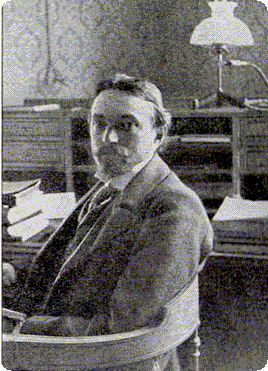
Bohumil Němec (1873-1966) worked in nearly all areas of plant biology (cytology, karyology, anatomy, physiology, immunity, parasitism, symbiosis, pathology, etc.), which were also the focus of the Institute, and he was a truly outstanding, globally renowned expert in these fields. Thanks largely to him, the Prague Institute of Plant Physiology gained international recognition even before World War I despite financial and material challenges. Although Němec was not a geneticist by training, he had a keen interest in this emerging discipline, predicting a great future and significant practical applications for it. He was the first to inform the Czech scientific community about the studies of Hugo de Vries, Carl Correns, Erich von Tschermak-Seysenegg, and other scientists who studied the rules of heredity at the beginning of the 20th century. Many students of genetics, even nearly two generations later, fondly recalled Němec’s participation in genetic seminars, his personal involvement in discussions, and his wonderfully told stories and memories. In 1903, Němec was appointed an adjunct professor, and in 1907, he became a full professor. Shortly after the establishment of the independent Czechoslovak Republic, he became the Dean of the Faculty of Philosophy at Charles University and was heavily involved in the separation of natural sciences from the humanities, leading to the creation of the Faculty of Science in 1920. The Institute of Plant Physiology was then transferred to this faculty, and two of Němec’s students - Jan Kořínek and Artur Brožek - established and led the microbiological and genetic departments within the Institute, which became the second and third main departments of the Institute.
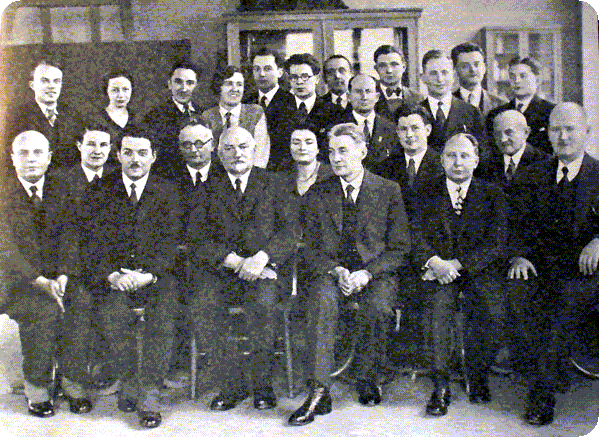
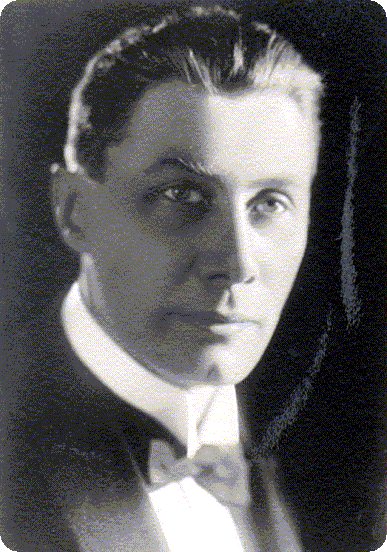
It is Artur Brožek (1882-1934) who can be considered the true founder of genetics at Charles University in Prague. Unfortunately, Brožek's role in the development of genetics in our country has not been fully appreciated to this day, perhaps due to the immense modesty that characterized him. Although he earned his doctorate in 1907, he could not remain at the university (there was no available position for him at the time) and had to make a living as a high school teacher. Nevertheless, he found time to continue his research, which he had started during his university studies, focusing on biometrics and statistical rules in the study of invertebrates (he had an excellent mathematical background). This naturally led him to genetics and Mendel's laws of inheritance. Later, when his personal situation improved somewhat, he resumed his collaboration with the university and began his complex, extensive, and very laborious experiments on the monkeyflower (Mimulus). The results revealed a number of interesting aspects related to the inheritance of flower color in this species, extranuclear inheritance, and more. Partially based on these findings, he later wrote the textbook “The Science of Heredity”, which was published in 1930. Brožek himself became a university lecturer in 1920, and seven years later, he became the first professor of genetics at Charles University in Prague (and the first professor of genetics in Czechoslovakia!). In 1924-1925, he also went on a research stay in the United States, where he worked in the laboratories of the already world-renowned geneticists C.B. Davenport and T.H. Morgan. From Morgan's laboratory, he brought back to Prague a collection of mutant fruit flies (Drosophila melanogaster), which he later used as demonstration material in his lectures and practical courses. Brožek was also the first translator of Mendel's original study from German into Czech and an tireless promoter of genetics among both the professional and general public.
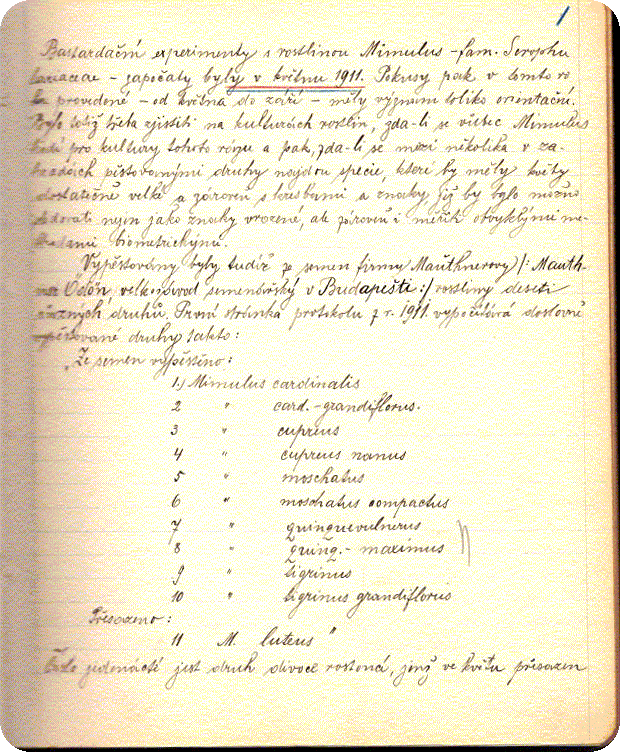
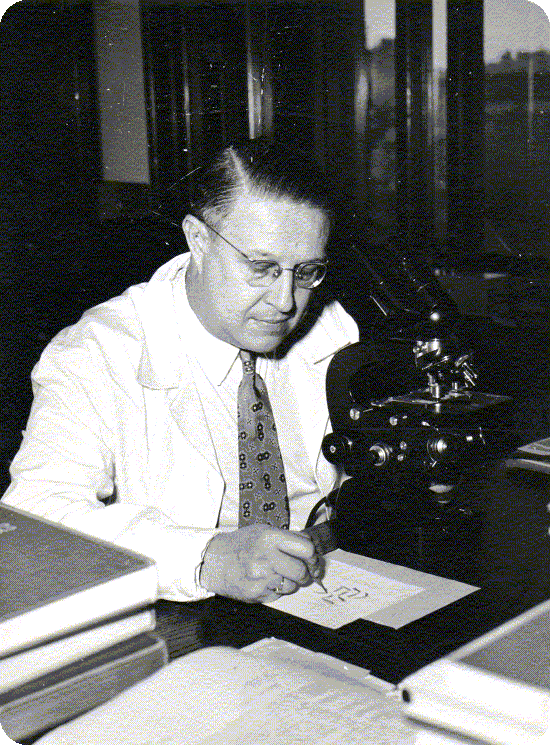
After Brožek's death in 1934, Karel Hrubý (1910-1962) became his successor as the head of the genetics department at the Institute of Plant Physiology. Although Hrubý considered himself more of a student of Professor Němec rather than Brožek, he continued the work of both his predecessors, focusing on various biometric-genetic and cytological issues, particularly in plants (though he was also an active entomologist). In genetics, Hrubý is best known for his work on the taxonomy of different species of sage (Salvia) and the inheritance of certain morphological and biochemical traits in this genus and other plants. Many of his students at the university later continued research in this area. In 1937, Hrubý was appointed associate professor, and the following year, he undertook a research stay in England at the then (and still) highly prestigious John Innes Horticultural Institution in the laboratory of C.D. Darlington. This stay significantly contributed to his interest in pomological studies and the practical crossbreeding of fruit trees; some of his hybrids of apple, pear, and cherry trees survived in Brožek’s genetic garden at the Faculty of Science in Albertov, Prague, until recently. Unfortunately, Hrubý's scientific and teaching career was severely affected by the German occupation from 1939-1945; after the closure of Czech universities, he initially worked briefly as a high school teacher, then was deployed as a laborer at Junkers. Despite these hardships, Hrubý remained dedicated to genetics, and in 1943 he published the popular science book “Creating with Nature”, which inspired many young people in the post-war generations to pursue biology and genetics.
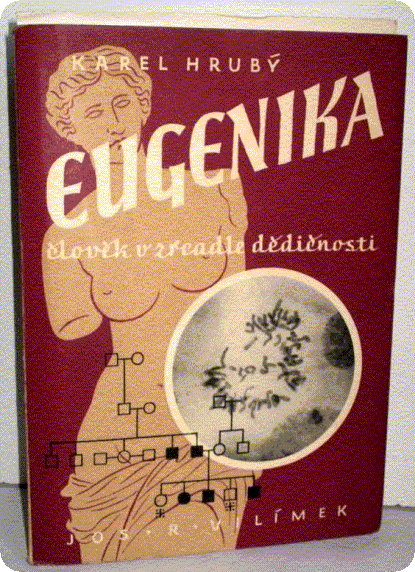
After the end of World War II in 1945, Professor Hrubý became heavily involved in the promotion of genetics and can rightfully be considered one of the most significant founders of post-war Czech genetics, with a considerable influence on Slovak institutions as well. He returned to his university teaching career (he was appointed professor in 1945) and worked as the head of the genetics department at the Institute of Plant Anatomy and Physiology (which was by then fully located at Viničná 5). The year 1947 was a very successful one for him - he represented Charles University at the VII International Congress of Genetics in Stockholm, founded and opened Brožek’s Genetic Garden in Albertov, and, most importantly, he made the genetics department an independent entity by establishing the Genetics Institute (the remaining departments became the Microbiology Institute, led by Jan Kořínek, and the Institute of Plant Anatomy and Physiology, led by Sylvestr Prát). In 1948, Professor Hrubý published another popular science book titled“Eugenics”. However, the favorable development of the newly established Institute did not last long. The "Victorious February" of 1948 marked the beginning of a series of reorganizations of higher education institutions based on Soviet experiences, and especially the rise of Lysenkoism and the campaign against genetics as a "bourgeois pseudoscience." Despite these challenging times, Professor Hrubý continued unofficially teaching genetics and laid the groundwork for plant mutagenesis studies in the Czech Republic, mostly with practical applications (such as potato resistance to viral diseases, increasing alkaloid content in medicinal plants, and the pollination capabilities of fruit trees).
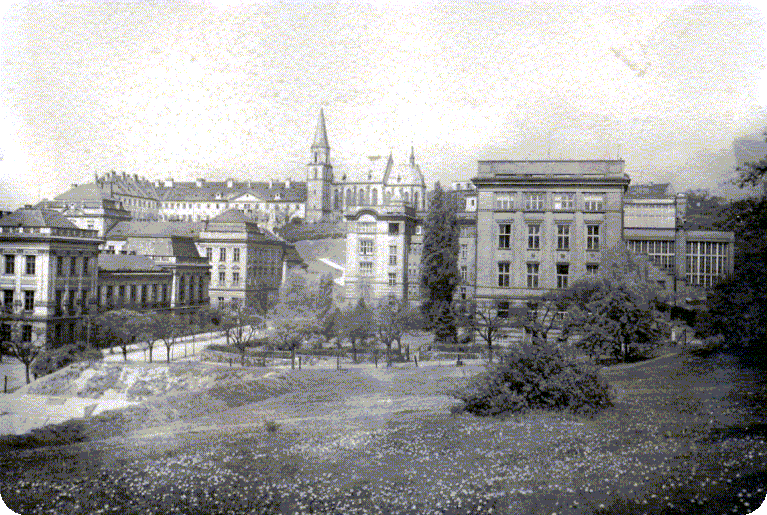
In 1950, the independent institutes that had been established three years earlier were once again abolished, and a single Department of Botany was formed in Viničná and Benátská (at least the department heads were retained, and the specialized focuses continued). However, due to the significant incoherence and difficulty in managing this large entity, it was split in 1952 into two departments: the Department of Botany (based in Benátská) and the Department of Plant Physiology, Microbiology, and Genetics (based in Viničná). This was the first time the term "genetics" appeared in the official name of one of the faculty’s departments. This Department combined the original specializations in genetics, microbiology, and plant anatomy and physiology, and it also included a fourth division dedicated to soil microbiology. In addition to the short-lived existence of these various organizational structures and the necessity to primarily secure theoretical and practical education for students (who were mostly pursuing teaching careers at that time), another nonsensical reorganization occurred between 1953-1958, this time at the faculty level. The Faculty of Science was disbanded, and three separate faculties were established: the Faculty of Biology, the Faculty of Mathematics and Physics (which also included chemistry), and the Faculty of Geology and Geography. Fortunately, the faculty leadership at least maintained some basic educational collaboration. The separation of biology from chemistry, however, diminished the advantage that any Faculty of Science typically holds, so after 1958, the Faculty of Science was reinstated (while the Faculty of Mathematics and Physics was retained, this time without chemistry).
Following the reestablishment of the Faculty of Science in its full form in 1959, yet another departmental reorganization occurred, leading to the creation of a separate Department of Plant Physiology and Soil Microbiology, and finally, the first independent Department of Microbiology and Genetics, which, despite undergoing several name changes over the following years, remains in existence to this day. It was largely thanks to Professor Hrubý's exceptional efforts that genetics at the Faculty of Science navigated these turbulent periods without major mishaps, and that he and his colleagues ensured sufficient awareness among students of the existence of genetics and its significance for biological sciences and society. In 1958, he once again represented Czechoslovak genetics at the 10th International Congress of Genetics in Montreal, where he proposed celebrating the centenary of Mendel's discovery by organizing an international congress in Mendel’s homeland. This indeed came to fruition seven years later. Although Hrubý was an internationally recognized scientist, he was not considered a suitable candidate for heading the new department by the leadership of socialist Czechoslovakia at the time. Thus, he remained as the head of the Genetics Division, while the Department was led by Jiří Stárka (1919-2003), who, given his focus on the physiology and biochemistry of microorganisms, also retained leadership of the Microbiology Division of the Department. Associate Professor Stárka, who was scientifically focused on bacterial cell growth and division, paid great attention to education and postgraduate studies, holding seminars (in both microbiology and genetics) and for the first time, closely collaborating with senior staff at the Institute of Microbiology of the Czechoslovak Academy of Sciences (CSAV) and the Faculty of Food Technology at the University of Chemistry and Technology, Prague – marking the first attempt at integrating microbiological researchers in Prague.
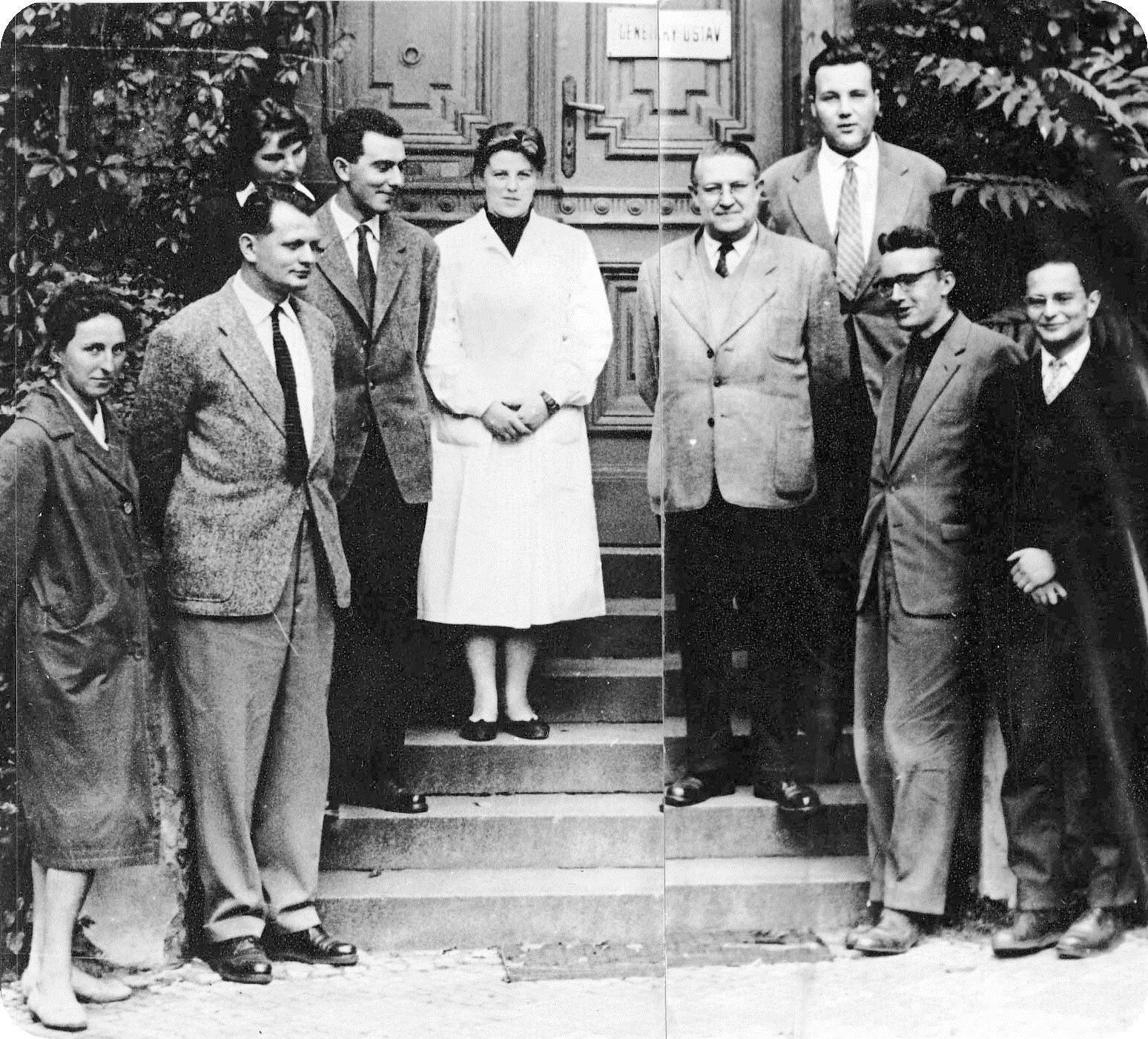
Thus, in 1959, the Department entered a relatively stable and professionally calm period. This was facilitated by the experienced personnel from the turbulent earlier years (Karel Hrubý, Jan Nečásek, Zdena Hlaváčková, František Kaprálek, Jiří Stárka, Vojtěch Závada, Naděžda Avratovščuková, Bohumil Kníže, Jaroslav Drobník, Jarmila Tomková, Eva Koutecká, among others). From the perspective of genetics, Hrubý´s successful strategy of incorporating specialized "practical" lectures (focused on topics such as plant breeding protection, livestock breeds, experiment evaluation, and crop varieties) continued to be applied, while general genetics was mostly lacking in the curriculum. At that time, it had to remain somewhat concealed, but in 1961 (at the beginning of the relaxation of repression of genetics in socialist countries), Hrubý´s significant textbook "Genetics" was published, becoming a fundamental genetics encyclopedia and university textbook in the Czechoslovakia for many years. The following year, Hrubý managed to integrate his General Genetics lecture into the core curriculum. Unfortunately, in the same year, Professor Hrubý tragically died in a bus accident during a field trip. His lecture and leadership of the Genetics Division were immediately taken over by Jan Nečásek, Zdena Hlaváčková took over the genetics seminars, and Naděžda Avratovščuková took charge of Brožek’s genetic garden. These events demonstrated the high level of teamwork among the Department staff.
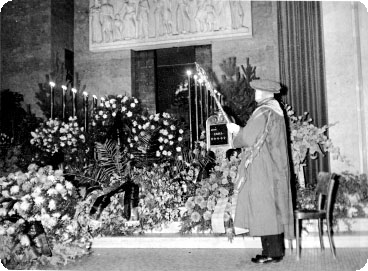
In the first half of the 1960s, a biophysics research group was formed within the Department, led by Jaroslav Drobník (1929-2012), who, with support from Vladimír Vondrejs, focused on studying nucleic acids, the effects of ionizing and radioactive radiation, thymine-less death, and DNA replication. This group benefited from the partial rehabilitation of genetics (the 1965 Mendelian Congress in Brno on the 100th anniversary of Mendel’s genetic experiments; the resolution of the Czechoslovak government to promote genetics) and in 1967 transformed into an independent Biophysics Division. In that same year, the department was renamed the Department of Genetics, Microbiology, and Biophysics. However, in 1969, Jaroslav Drobník (who was also serving as the faculty’s vice-dean at the time) was dismissed from his leadership role for political reasons and was subsequently dismissed from the Faculty of Science in 1970 (he later secured a position at the Institute of Macromolecular Chemistry of CSAV). Biophysics was transferred to the Department of Environmental Protection, where it eventually disbanded. A similar fate befell animal genetics, which was transferred to the Department of Zoology.
During his tenure at the department, Associate Professor Stárka published an excellent textbook titled "Physiology and Biochemistry of Microbes." However, in 1968, he left for a research stay in France, from which he did not return in 1970, and he was replaced in leading the Microbiology Division by František Kaprálek and Vojtěch Závada. The Department as a whole was then led by Jan Nečásek (1925-1998), a geneticist-mycologist. Besides his important pedagogical work (he authored the textbook "General Genetics," published in 1979), he experimentally focused on mutagenesis in bacteria and the influence of the external environment. Under his leadership, new lectures such as "Advances in...," "Selected Chapters in...," etc., were also introduced. Like Stárka, Nečásek did not become a professor during his time at the Department (Stárka later became a professor in France), and although this was not likely the main reason, he eventually left Prague, not for emigration but for České Budějovice, by which step he addressed certain family needs as well. There, at the Institute of Plant Molecular Biology of CSAV, he worked on plant gene manipulation and biotechnology. His pedagogical and research tasks in Prague were immediately taken over by Petr Pikálek.
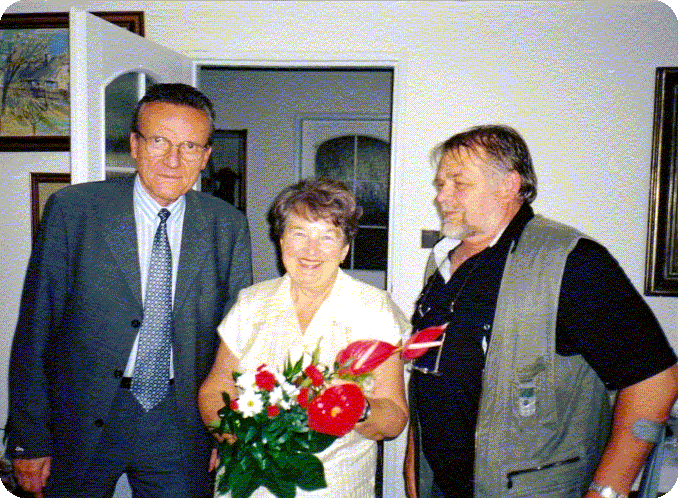
In 1978, after Nečásek, the Department was taken over by Olga Bendová (1929-2010), who was appointed professor of microbiology in the same year and was professionally focused on yeast biology. She definitively resolved the situation concerning biophysics, and the department reverted to its original name with a mutation in the order of disciplines – the Department of Genetics and Microbiology. This name has been retained to this day. Dr. Bendová initiated, after consultations with Vladimír Vondrejs, Vojtěch Závada, and Stanislav Zadražil, the creation of a research group focused on yeast biology and gene manipulation, which foreshadowed the Department’s long-term activities in this area (then led by the external teacher of molecular biology and genetics, Stanislav Zadražil), and also led to the establishment of a joint research laboratory for gene manipulation between the Faculty and the Institute of Molecular Genetics of CSAV (1985). The new leadership of the Department also paid attention to structural modifications in the building at Viničná 5 for the department's needs.
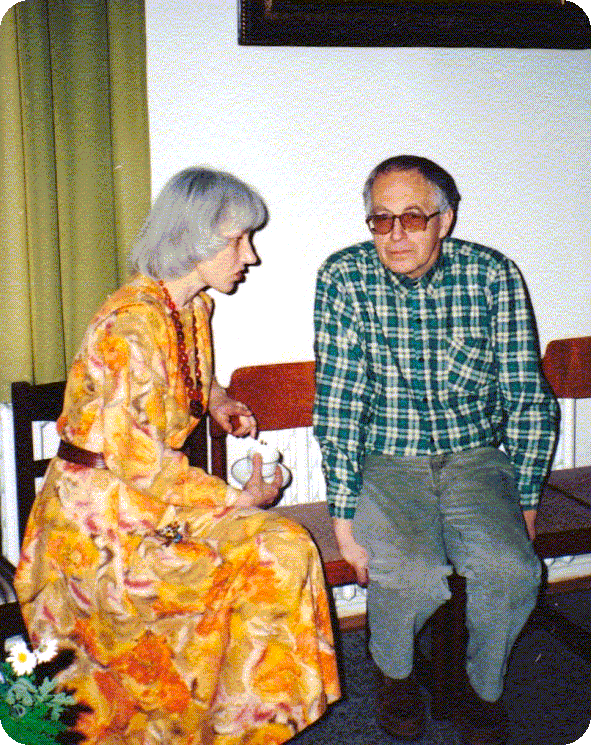
In 1989, the Department of Genetics and Microbiology at Charles University was led by Vojtěch Závada (1929-2019), a microbiologist and virologist who became head mainly due to pressure from the academic community, as he never personally aspired to the position. Závada was a passionate educator known for his excellent virology lectures and contributions to modern molecular biology education. During his tenure, past political injustices against certain department members were rectified, allowing individuals such as Vondrejs, Avratovščuková, and Hendrychová to finally receive the associate professor titles they had long deserved. In early 1991, Závada handed over the leadership to Stanislav Zadražil, a biochemist and molecular biologist from the Institute of Molecular Genetics of the CSAV, who had been a longtime external teacher of molecular biology at the Faculty of Science. Zadražil had made significant contributions to the teaching of molecular biology at Charles University, including translating two textbooks of molecular biology that were highly praised as university-level teaching resources. In 1992, he was appointed the first professor of molecular biology in the history of Charles University. He was also the first to be selected through a proper competition for senior faculty positions, and he brought with him several experienced colleagues from the joint workplace with ČSAV (Jitka Forstová, Zdena Palková, Martin Pospíšek). These individuals, in agreement with the new director of the Biotechnology Institute of Charles University in Prague (the returning Professor Drobník), temporarily filled some vacant positions in that Institute as well and have led three research groups within the Department. Under Zadražil's leadership, a third division of the Department, focused on molecular biology and molecular genetics (cellular and gene manipulation with microbial cells, transgenic microorganisms with heterologous expression of foreign genes, and experimental virology with a polyomavirus model for the first time in the Department’s history) was rapidly established. This also definitively consolidated and unified the teaching of molecular biology and genetics, which had begun in the 1960s in the faculty Departments of Biochemistry (Zadražil) and Genetics and Microbiology (Vondrejs, Závada, Drobník).
A significant impetus for teaching and research during this period was the restart of postgraduate doctoral studies at the level of the subject area board in Molecular and Cellular Biology, Genetics, and Virology. This board became the organizational core for coordinated Biomedicine Studies at the Faculty of Science and the medical faculties of Charles University in Prague, in collaboration with the institutes of the Czechoslovak Academy of Sciences (after 1993, the Academy of Sciences of the Czech Republic, AV ČR), based on an agreement between Charles University and the AV.
In 1998, Petr Pikálek (1943-2022), a student of Nečásek with a strong pedagogical focus, replaced Stanislav Zadražil as the head of the Department. Pikálek was well-known for his general genetics lectures for non-biological disciplines at the faculty. Under his influence, the departmental divisions were transformed into four specialization tracks (genetics, molecular biology, virology, and microbiology). At the turn of the century (and millennium), a credit system was introduced for the organization and international evaluation of studies. From 2004 to 2010, the Department was led by Zdena Palková, who was appointed professor of genetics, molecular biology, and virology in 2008. During her tenure, the number of master's specializations within the Department's Master's study program in Genetics, Molecular Biology, and Virology was administratively expanded to six. The next head of the department, from 2010 to 2013, was microbiologist Ivo Konopásek, who focused on stabilizing the microbiological section of the Department and managing the second subject area board situated within the Department (Microbiology, also included in the coordination of doctoral study programs in Biomedicine). At that time, the Department engaged in experimental collaborations primarily with the Institute of Microbiology of AV ČR, as well as with other academic or non-academic research institutes.
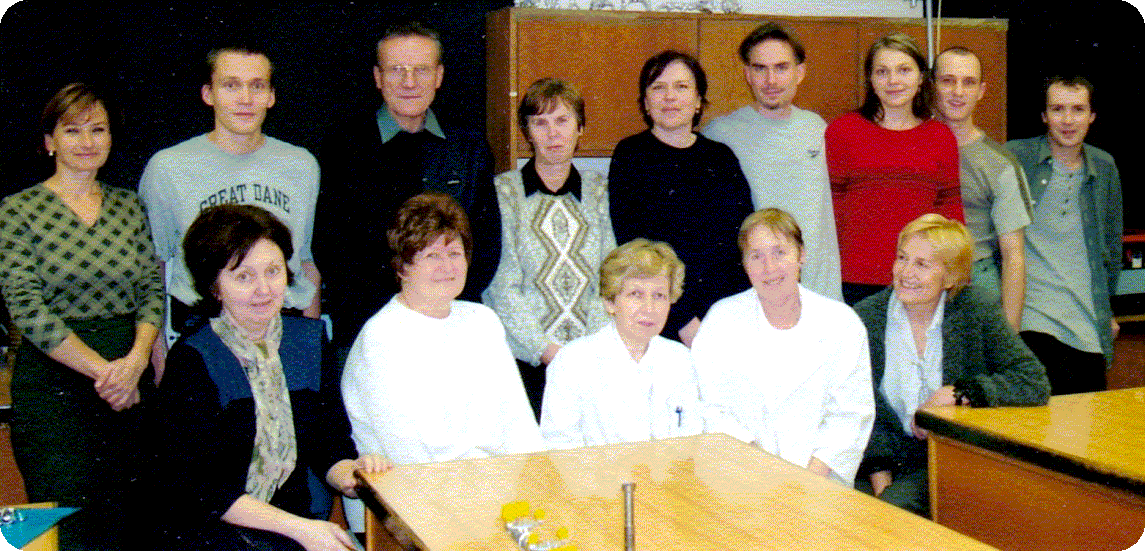
Some members of the Department of Genetics and Microbiology in 2002 (photo from the archive of S. Zadražil)
From 2013 to 2019, the Department was led by Ivan Hirsch, a graduate of the biophysical postgraduate program at the department. Hirsch, who had worked as a research director at INSERM in Marseille, France (1989-2013), focused on virology, particularly retroviruses. Upon returning to the faculty, he initiated further intensive research collaborations with the Czech Academy of Sciences (Institute of Molecular Genetics, Institute of Organic Chemistry and Biochemistry). Under his leadership, part of the Department's research teams moved to the newly built BIOCEV Center of Excellence in Vestec near Prague, a joint facility of selected faculties of Charles University and institutes of the Academy of Sciences. This move significantly expanded the Department’s experimental facilities, while still maintaining laboratories and seminar rooms at its traditional location at Viničná 5, which had also undergone extensive renovation and modernization over the past twenty years (particularly under the leadership of Zdena Palková). The new facilities offered students access to cutting-edge equipment. Additionally, in 2015, the Department expanded to include two research teams from the Institute of Hematology and Blood Transfusion (Ruth Tachezy, Michal Šmahel), and in 2016, it incorporated the team of Klára Grantz Šašková originally from the Institute of Organic Chemistry and Biochemistry of the Czech Academy of Sciences.
Since 2019, the head of the Department of Genetics and Microbiology has been Ruth Tachezy. Under her leadership, the Department has expanded to include another research team (Jarmila Hnilicová) originally from the Institute of Microbiology of the Czech Academy of Sciences, thereby strengthening its microbiological section once again. At the same time, four of the Department’s research teams have become involved with the National Institute of Virology and Bacteriology.

